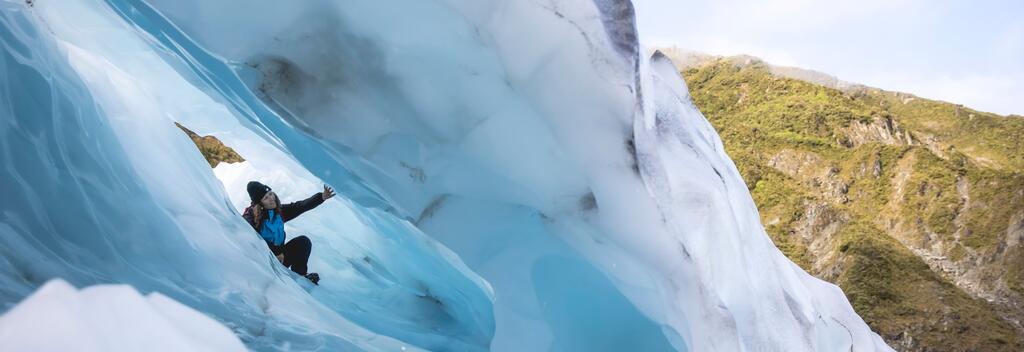-
Popular places to visit
Popular things to do
Helpful tips
Here's a few useful links to help with planning your trip to Aotearoa New Zealand.
-


Release your inner explorer in a pristine national park that offers a wide selection of tempting and impressive terrain.
This national park is known for its "glacier country". In some places, huge tongues of ice extend all the way back down to near sea level. 3000m peaks tower over lowland rainforests that reach all the way to the edge of the Tasman Sea. It's an area also blessed with contrasting tussock grasslands, coast, lakes, rivers and wetlands.
Embark on kayaking adventures on Lakes Matheson and Mapourika and explore vast rivers and coastal lagoons. Take an easy walk to the base of the fascinating Fox and Franz Josef glaciers and look for some of New Zealand’s rarest native birds in the rainforests and wetlands.
The mountains of the Southern Alps are revered by the local Maori people (the Ngāi Tahu tribe) as their ancestors. The whole coastal environment is also of considerable importance to these people, both spiritually and for the food and resources it provides.
For many travellers, the fast-moving Fox and Franz Josef glaciers are the primary reason to visit. They move up to four metres every day, which in the glacier world is uncommonly rapid (the Tasman Glacier, on the eastern side of the great divide, moves at only 650 millimetres a day). At the foot of each glacier, you can hear the grinding, crushing sounds of ancient ice forcing itself down the time-worn valleys.
Between the glaciers and the sea, the park is a bird watcher's paradise. Rainforest and large areas of wetland shelter rare species such as the Ōkārito Brown Kiwi, Southern Crested Grebe (kamana) and White Heron (kotuku).
For climbers and ski-tourers, the Department of Conservation(opens in new window) offers a series of alpine huts high in the park. Hikers walking to the hot pools at Welcome Flat can book overnight accommodation in a 'Serviced Alpine' DOC hikers' hut.
The towns of Fox Glacier and Franz Josef provide a full range of accommodation - from backpacker lodges to luxury hotels. You'll also find a good range of restaurants, cafes and tour companies specialising in guided glacier walks and other forms of adventure.
There are several ways to experience the glaciers. You can walk to the terminus of either glacier, or hike through the bush to a viewing point. Another option is to join a guided glacier walk - ice climbing equipment is provided. Or you can take to the air and see the glaciers from a helicopter or small plane.
The one day trek to the Welcome Flat hot pools requires a moderate level of fitness and outdoor experience. You'll need to stay overnight in the DOC hut (a hut ticket is required) before returning the next day. Mountaineering experience is essential for the historic Copland Track, which crosses the great divide.
During the nesting season, local guides can take you to see the beautiful kotuku (white herons) in the Waitangi Roto Nature Reserve. Kayaking on lakes, or the Ōkārito lagoon, is another way to spy on the bird life.
We use cookies to provide you with a better experience on this site. Keep browsing if you're happy with this.
We also use cookies to show you the best of New Zealand on other platforms. See our Privacy Policy and Cookie Policy to understand how you can manage cookies.